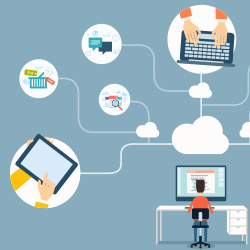- Calls to this hotline are currently being directed to Within Health or Eating Disorder Solutions
- Representatives are standing by 24/7 to help answer your questions
- All calls are confidential and HIPAA compliant
- There is no obligation or cost to call
- Eating Disorder Hope does not receive any commissions or fees dependent upon which provider you select
- Additional treatment providers are located on our directory or samhsa.gov
Social Media Bullying

Contributor: Crystal Karges, MS, RDN, IBCLC, Special Projects Coordinator at Eating Disorder Hope/Addiction Hope
The Growth Of Social Media
Social media has come to develop daily life in the 21st century. With Internet access virtually everywhere and at our fingertips, we have a constant connection to others across the world through various social media platforms.
Majorities of people are on social media today, with research estimating that approximately 75 percent of online adults using social media sites [1].
We may find ourselves interacting with people we did not know previously, engaging over a topic that is controversial, or having an ongoing discussion about widespread topics.
Whether by posting pictures, articles, status updates, videos and the like, we are constantly exposing bits of ourselves to the world, which can make us vulnerable on a whole different level.
Influences
As the way we interface with people has changed and progressed, this has also influenced the way we perceive ourselves and how our self-esteem is developed. For some individuals, demeaning interactions via social media can lead to more complicated issues and concerns.
Cyber-bullying is a reality that many people now face today, due to increased involvement with and interactions on social media.
Cyber-bullying can be defined as a form of bullying that takes place using electronic technology. This includes communications via social media sites, as well as text messages, forums, chats and websites.

For example, a person may be harassed or receive inappropriate or threatening remarks on a status post, picture or video that was shared on a social media site.
Be Mindful
Since the internet never sleeps, cyber-bullying is something that occur perpetually and breed discontent almost instantly.
For someone who may be susceptible to developing an eating disorder, cyber-bullying can become an environmental trigger to these mental illnesses. When used appropriately, social media can be used in a positive light, one that brings together families and friends and allows others to stay connected.
Be mindful of the manner in which you interact with others on social media and remember, words shared virtually are just as powerful as words spoken in person.
Community Discussion – Share your thoughts here!
How can you promote positive interactions on social media? What are movements have seen on social media platforms that support uplifting treatment of others?
References:
- Social Networking Fact Sheet, http://www.pewinternet.org/fact-sheets/social-networking-fact-sheet/ Accessed 23 April 2015
Last Updated & Reviewed By: Jacquelyn Ekern, MS, LPC on May 7th, 2015
Published on EatingDisorderHope.com
